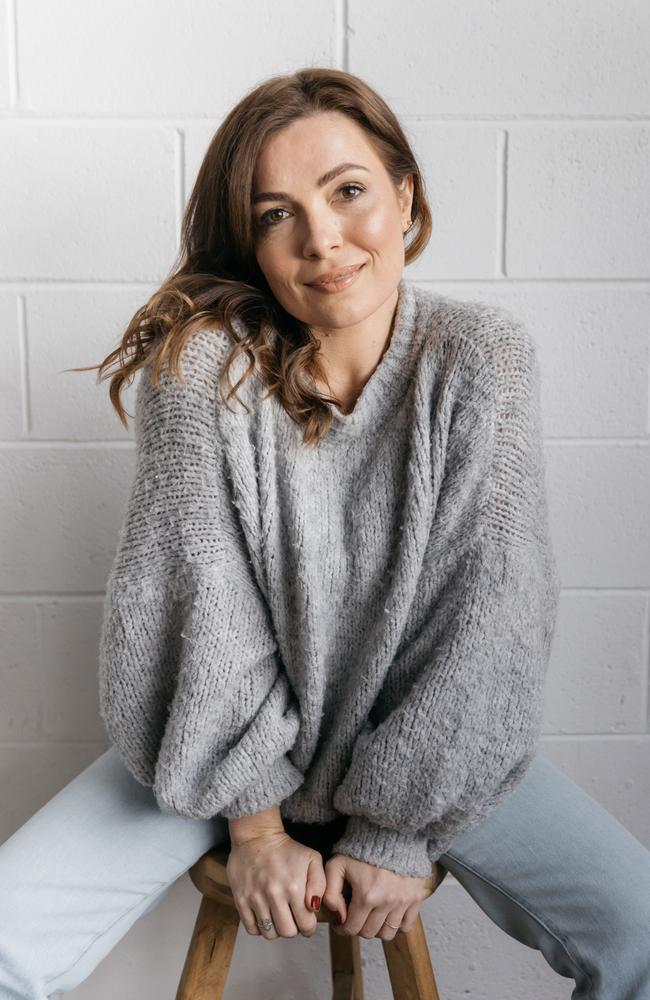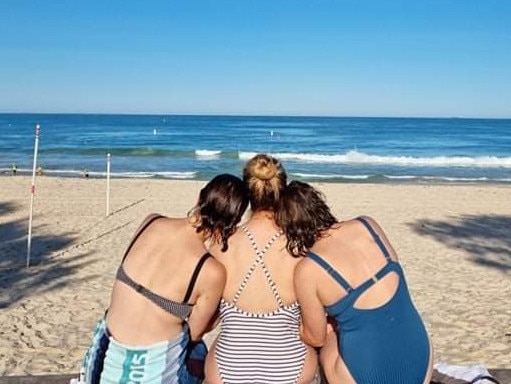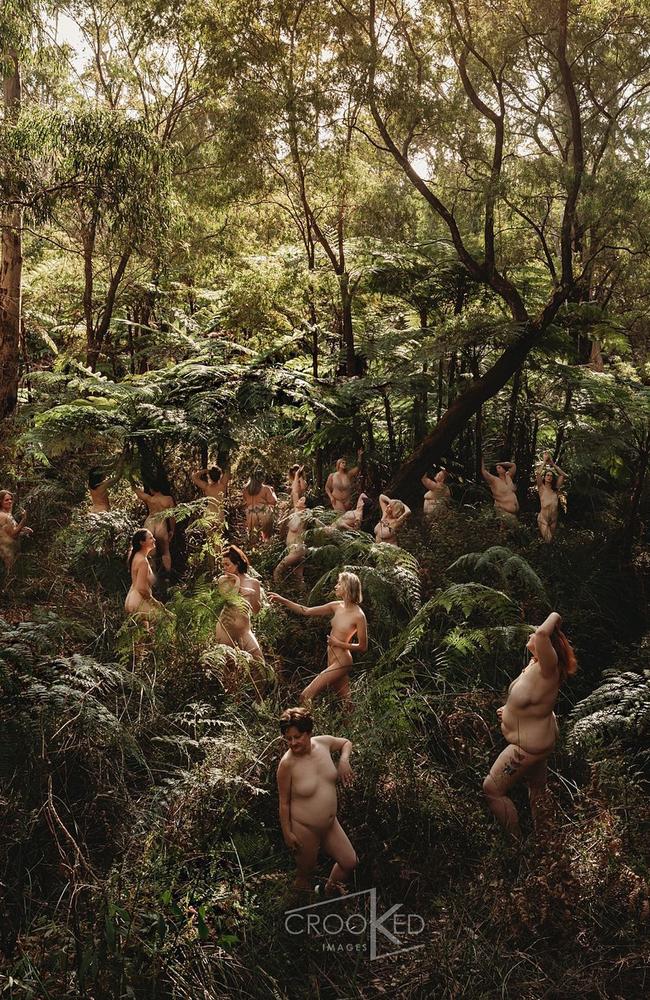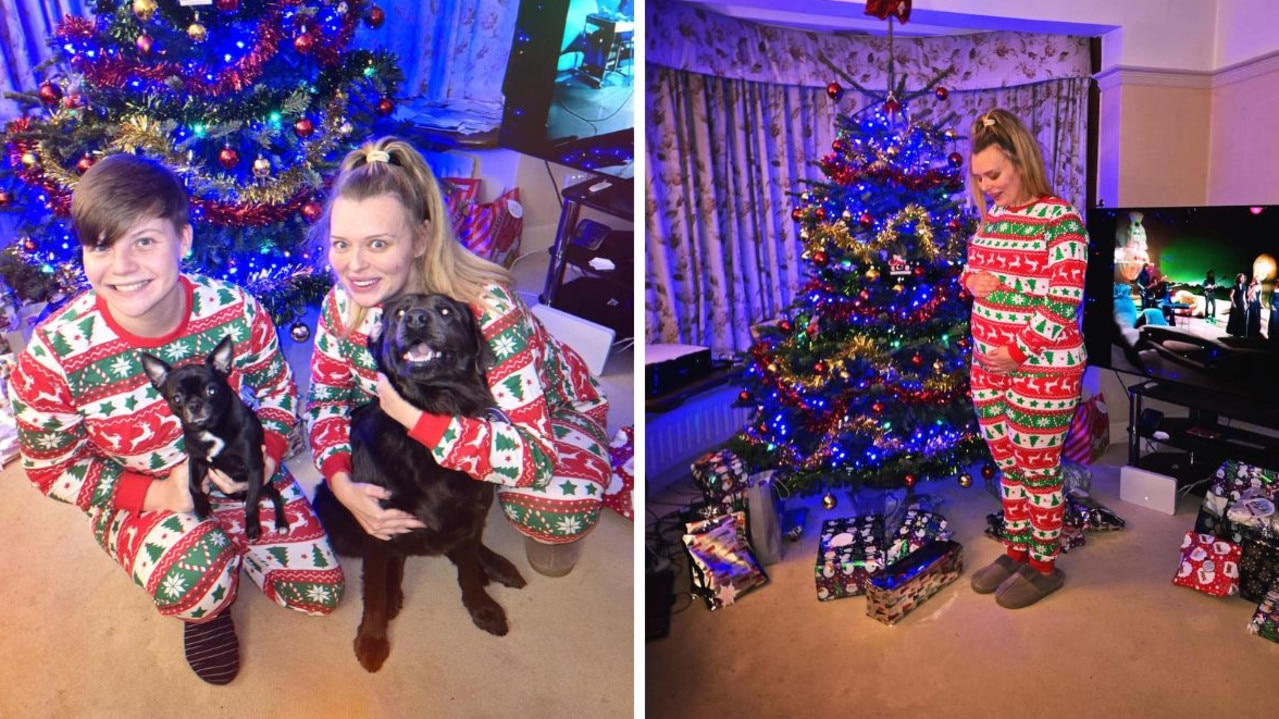Aussie woman opens up about experiencing pregnancy loss
A public speaking coach has unveiled the unexpected side effect that came with taking part in a nude photo shoot with other women.

Pregnancy
Don't miss out on the headlines from Pregnancy. Followed categories will be added to My News.
A woman has revealed how a naked photo shoot helped fill her with hope after she went through pregnancy loss.
Jacqui Maloney, 39, knew that in her 20s she didn’t want to have children, and was very happy living the young adult lifestyle where she could look after someone’s child and then give them back.
But, as soon as she hit 30, something changed and she realised maybe it was something she wanted.
“Two or three years later, I was with my partner and we decided we were ready and wanted to take this step together,” she told news.com.au.
“I fell pregnant immediately.”
Ms Maloney saw it as a sign that she was meant to have children, saying in that instant the couple started to plan the next 18 years of their lives revolving around their unborn child.
The first ultrasound showed there was a gestational sac but there wasn’t a sign of an embryo, with medical staff assuring her that it was normal and she may have gotten her date of conception wrong.
Ten days later, Ms Maloney’s partner was away and she was asked to come back in to have another ultrasound. But, while there were indicators of pregnancy, there was still no sac. Doctors said it wasn’t a viable pregnancy.

“With dark sunglasses on, I left the doctors surgery in tears. I didn’t want to talk about it to anybody. I put blame everywhere else. I didn’t acknowledge how I was feeling,” she said.
She was given her options and Ms Maloney chose to have a “D&C” — a procedure where the cervix is opened and remaining pregnancy tissue is removed.
Ms Maloney said the nurses were overprotective of her during the hospital visit, whispering the name of the procedure — which ended up being delayed due to an emergency caesarian.
“Everyone had done such a great job protecting me, but someone else giving birth meant that I had to wait. It’s these little moments — if you’ve never had one before, you don’t understand what’s happening for that woman in that time,” she said.
Two days later, Ms Maloney went back to work as she wanted to stay busy, saying she simply wanted to “get on with it”. She said she essentially built up a wall, not explaining to anyone what she was going through.
The couple tried again to fall pregnant, filled with hope every time her period was a few days late only to be met with disappointment with a result they didn’t want.
Ms Maloney and that partner broke up — just like 22 per cent of couples who have had a miscarriage. A few years later, Ms Maloney fell pregnant once again with a new partner during Covid. This time, there was a heartbeat.
However, because it was happening during Covid, it meant she was attending all appointments alone. Doctors spotted a blood clot, which they monitored but didn’t expect to pose issues.
But, around the 10-week mark, doctors could no longer find a heartbeat.
“This could not happen again, I’ve been through this once and that was hard enough but that moment with just doctors and nurses — you can’t help but go into woe is me,” she said.
“Everyone around me was announcing pregnancies left, right and centre. It was happening in my own family. I’d been through this before and asked for a D&C as I wanted to get it over and done with,” she said.
“But I promised myself I wasn’t going to do what I did last time again. It didn’t help anyone and I suffered big time, I couldn’t do it to myself again.”
Ms Maloney was able to talk to the people in her life, being able to have an open and honest conversation with her mother about what was helpful in that moment. She said sharing it on social media also helped people suggest organisations that were helping women just like her, such as Pink Elephants and Red Nose. She also discovered the hospital she had her second loss at — King Edward Memorial Hospital — had a rose garden started by its chaplain so parents could bury their child as laws prevent burial in a cemetery before a certain point.

There are over 40,000 ashes of babies in the garden since 1989 — and now Ms Maloney is the chair of the committee who runs the garden.
“I’ve got the complete opposite from the last one and to say it’s saved and helped me with my grief is an understatement,” she said.
For others who may be going through similar situations, she said it was important to reach out to organisations as sometimes it’s easier talking to a stranger. However, she also said, her friendships and her relationships with her family are all the stronger for opening up, saying people don’t know what to say because we keep it to ourselves.
But, if you tell people what you need, they are very likely to give it to you and show up in a better way than before, removing any awkwardness or uncomfortability.
However, another thing that really helped Ms Maloney to come to terms with what happened was a naked photo shoot for artist Lauren Crooke for Crooked Images.
Very soon after her second loss, Ms Maloney was experiencing shame around the fact that her body had “failed” her as it didn’t do what it was “supposed” to as a woman.
“I just felt like my body had let me down,” she said, saying she also, like most women, had aspects of her body that she didn’t like.
But, she found a group of people raising awareness for mental health and jumping into the water at an ungodly hour to prove that every type of body was appreciated.
Nothing else seemed to make her feel better, and so she gave it a go and quickly it became a liberating part of her routine — and she quickly became disappointed she had let fears of people looking at her hold her back.
One of the friends she was doing these swims with was working with Crooke, who is known for brilliantly capturing women at whatever stage of life she was at, and asked Ms Maloney if she wanted to come along to a nude shoot.
“I felt so self conscious again. Being in a bathing suit is one thing but being stark naked was a completely different thing,” she said.
“But what I saw was women that had experienced was hardship similar or different to me — mastectomies, double mastectomies, stretch marks, scars from caesarians, tattoos that were covering bruises or scarring from domestic violence.
“Shaved heads, shaved body parts. Bellies, no bellies. Bums, no bums, boobs, no boobs.

Everyone just embraced where they were at and we all just came together and got naked and embraced all of the feelings.”
Ms Maloney said it was one of the most surreal things she has ever done, realising her body been through so much and could do so many incredible things.
She realised it didn’t have to be the end of her journey, filling her with hope.
One major lesson Ms Maloney learned about how important it is to have access to these conversations — particularly for those who are going through it.
A year ago, she posted something about her pregnancy loss to her social media and didn’t include a trigger warning, like she normally would.
“But, this one particular occasion I didn’t do that. An acquaintance — who has since become a friend — messaged me saying they loved the sentiment but asked if there could be a trigger warning for next time,” she said.
Ms Maloney went back into people pleasing but also had a moment of realisation that there was no trigger warning for her when someone was announcing their fourth pregnancy or celebrating a first birthday party.
She said there wasn’t trigger warnings for mental health or people going through breast cancer.
“I feel there are things we are embracing and talking about, like mental health was a taboo topic and now we have days and weeks dedicated to mental health,” she said.
“I am just waiting for pregnancy loss and miscarriage to have that. I know that it’s coming but if we don’t talk about it, we won’t ever get there.”
Ms Maloney also pointed out that trigger warnings also enable people to scroll past a topic, without considering that it is very much a conversation or a topic that needs to be raised.
Ms Maloney is sharing her story in honour of October 15, which is Pregnancy and Infant Loss Remembrance Day, in the bid that it will no longer be a topic we shy away from talking about.
Originally published as Aussie woman opens up about experiencing pregnancy loss





